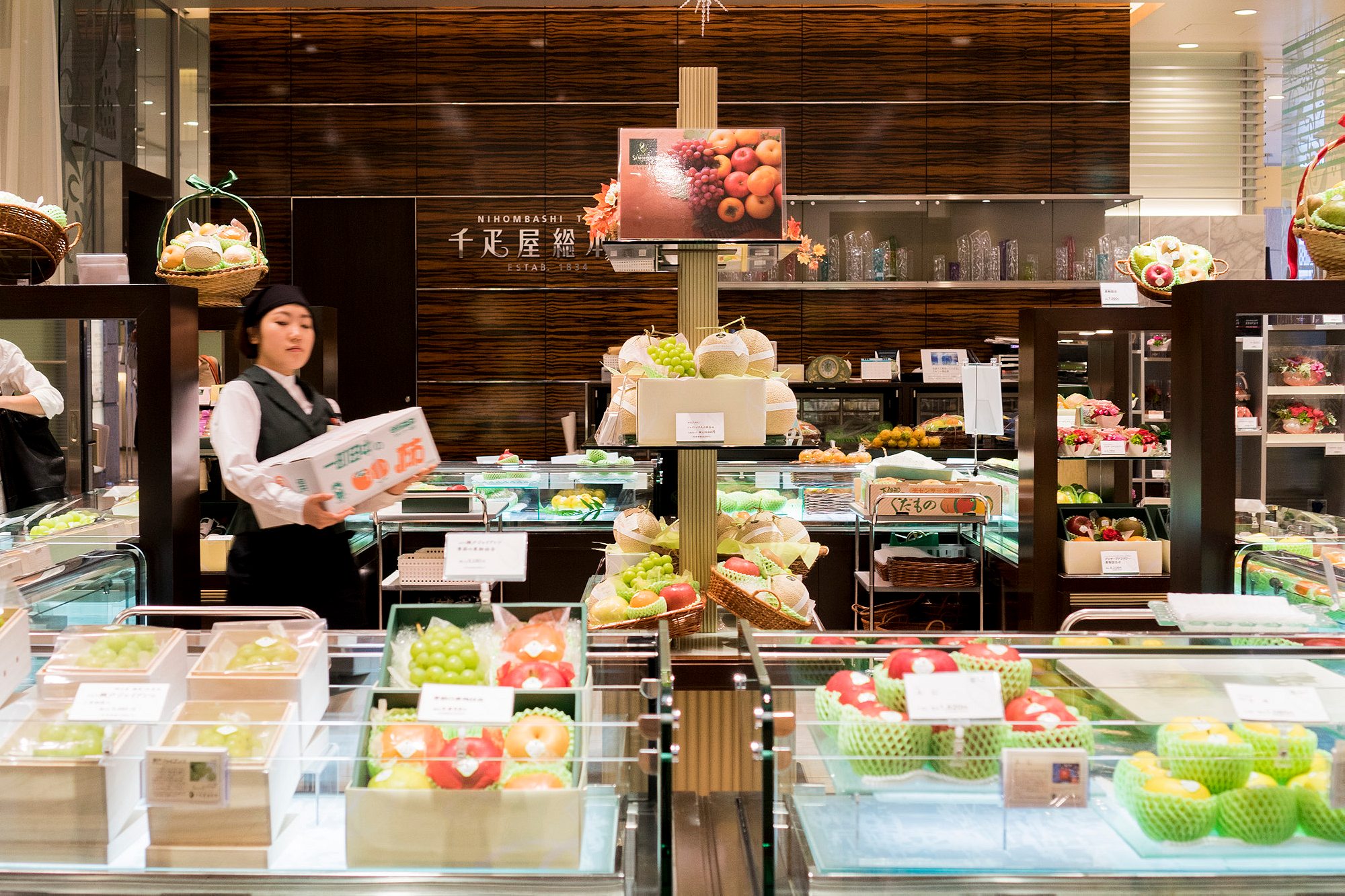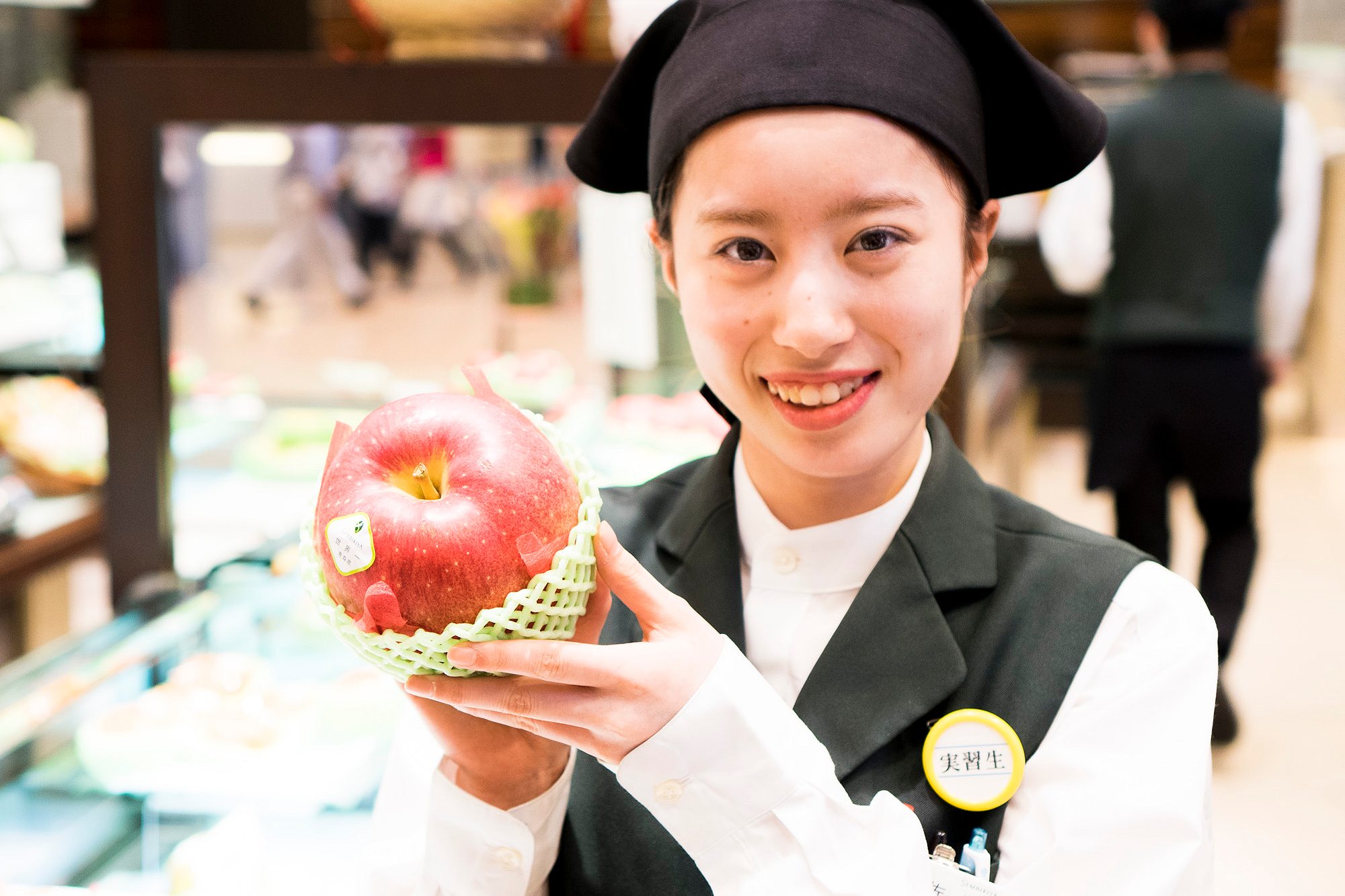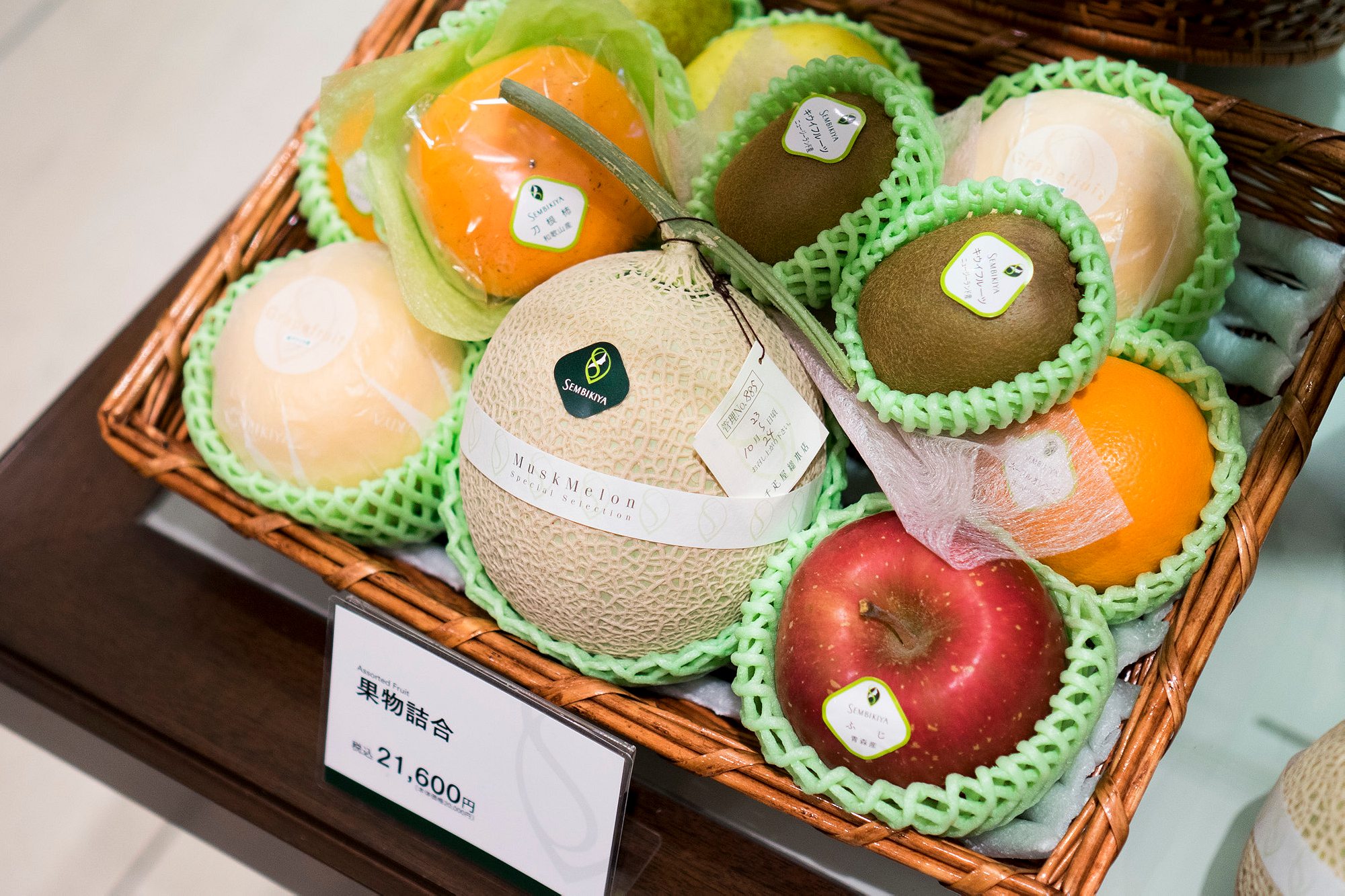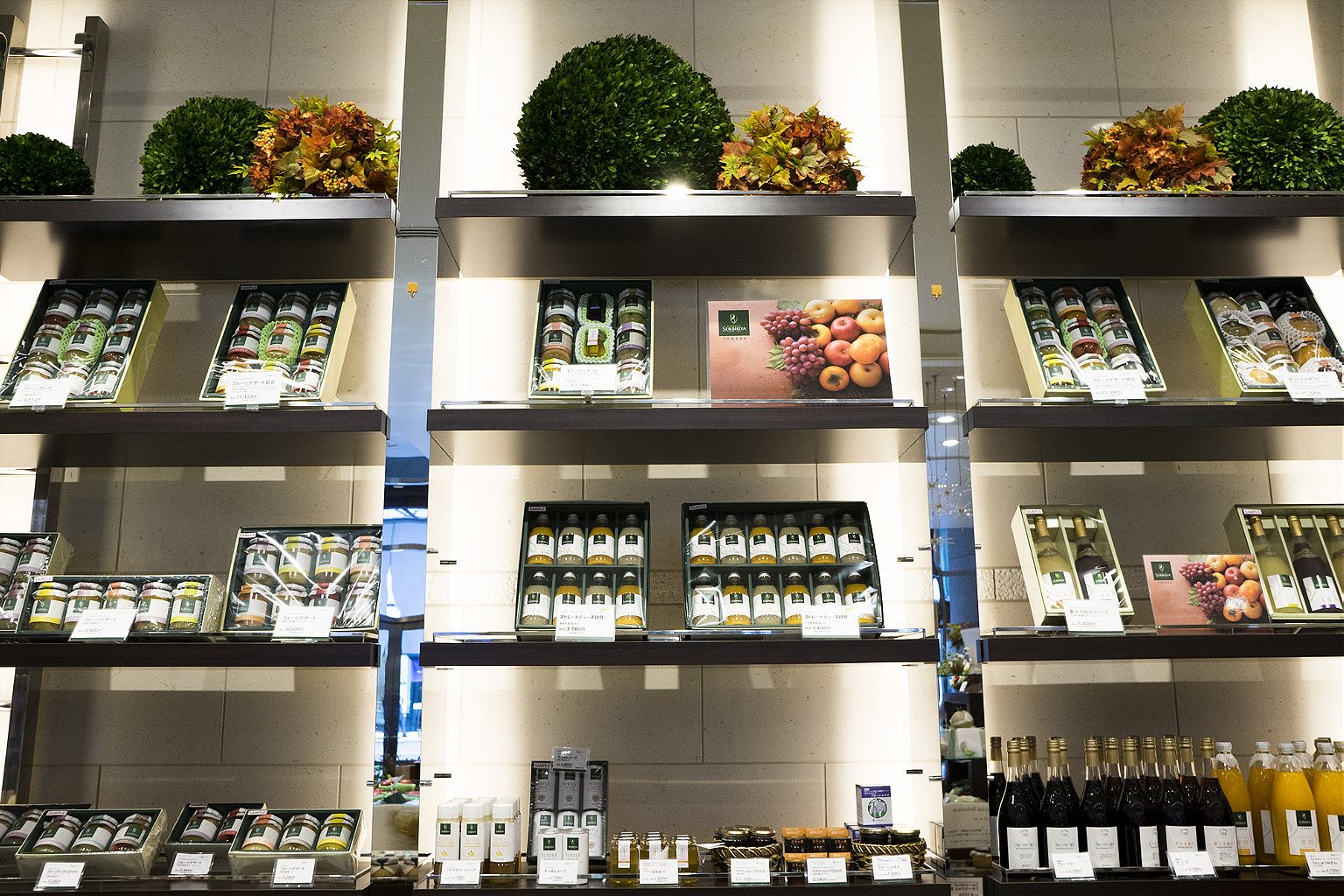Japan’s high-end fruit market elevates produce to works of art, and asking why starts you on a path to at least partial understanding of the severe codes that bind Japanese life.
TOKYO, Japan—
My journey to the heart of the muskmelon cult started with a strawberry. A few years ago, I was in a dimly lit Tokyo restaurant that served more courses than it had seats, where I dined on anatomical selections I couldn’t name belonging to species I didn’t know existed, prepared by a chef whose elegance with a knife resembled ballet more than cooking. Back home, an American version of this feast might have ended with a procession of desserts: a palate cleanser of grapefruit semi-freddo; a heftier dessert entrée of coffee buttercream with dark chocolate ganache; then a post-dessert dessert of truffles and sugar-coated jellies, plus a pastry to take home for later. But at my dinner in Tokyo, when the chef presented my dessert, I found a single, sliced strawberry, served alone on a plate.
Biting into one sliver of the fruit, I had the sense I was tasting in color for the first time. The strawberry was perfumed. It tasted of roses, honey, and a kiss. And it made absolutely no sense. Where did it come from? What made it special? Why only one?
I discovered my strawberry was both more special than I’d thought and less unique. In Tokyo’s department stores, just a few floors down from Dior dresses, I stumbled on shrink-wrapped boxes of strawberries, presented in soft lighting and on pedestals, being sold for $5 apiece—a bargain when I realized the best command $500 each. And it wasn’t just the strawberries: Japan had elevated all kinds of fruit to Birkin-bag status. In the subway, I spent $12 on fewer than a dozen grapes (again, cheap considering a bunch sold for $11,000 in 2016). I stared dumbfounded at YouTube fruit porn showing juicy hunks of yellow flesh being sliced from rare “egg of the sun” mangoes ($2,700 each for top specimens).
And then I learned about the “king of fruit”: muskmelons, reticulated spheres of “melting sweetness” that could command $27,000 a pair, earned TV specials in Japan, and wore tiny “hats” while ripening to save their pale flesh from sunburn. But … why? Did the world need melons that cost as much as a car? “It’s like asking in America, ‘Why do you high-five?’” said a Japanese friend, one of many I hounded for answers, and one of many who shrugged in response. “We have never questioned why the fruit is so expensive.” But, she added, “Since you asked about it, I started to realize, ‘Hmm … why, why, why?’”
Each fruit species boasts its own full-color brochure
By all accounts, Japan’s obsession with luxury fruits begins with Sembikiya, the country’s largest and oldest high-end fruit provider. So, ahead of a trip to Japan last fall, I emailed Sembikiya to see about arranging an interview at their flagship store in Nihonbashi, a tony part of downtown Tokyo that’s home to luxury hotels, lacquer bowl purveyors, and washi paper boutiques.
When I arrive in the marble lobby of the high-rise to which I’d been directed, I pass back and forth in front of what appears to be a jewelry store before finally realizing it is Sembikiya. Dark, polished wood and sheer curtains line the walls, and sparkling chandeliers shaped like exploding snowflakes twinkle overhead. Glass display cases hold meticulous rows of fruit tended by prim women in starched black uniforms and berets ready to share anecdotes about the sweetness of the pears ($19 each), or Sekai-ichi apples ($24 each). Middle-aged women with Chanel bags and teased up-dos inspect plump, jade-colored Seto grapes swaddled in crisp white paper, while their husbands admire the altarlike case of muskmelons at the center of the floor, each one perched on its own wooden box lined with mint-colored paper ($125 each).
Each fruit species boasts its own full-color brochure with tasting notes to rival those for first-growth Bordeaux. “The skin is thin, while the seedless pulp is moderately firm,” reads the card for the Suiho grape. Eaters can savor a “delicate sweetness and aroma with a refreshing aftertaste.”

One of the salespeople informs me that around 80 percent of customers buy Sembikiya’s fruit to give as gifts. The store gets busiest around July (when tradition dictates offering a chugen gift to people to whom you feel indebted) and in December (when it’s customary to give a seibo present for similar reasons). Sembikiya can sell as many as 200 muskmelons a day, which might be offered to bosses, clients, teachers, parents, or doctors. How do you choose what fruit to give? “If the boss loves apple more than melon, it’s better to give him an apple than a melon, right?” the salesman advises. “But if the boss likes higher-glamour fruits, then maybe it’s better to go for the melon.”
An emissary from Sembikiya’s corporate office whisks me upstairs to the company’s “fruit parlor,” a café serving elaborate ice cream sundaes and fruitscapes made with whatever ripe produce hasn’t sold in the store. As Vivaldi’s Four Seasons plays and we sip ice water from wineglasses, Tsuyoshi Monozumi—a former fruit-parlor chef who now oversees all 16 Sembikiya branches—walks me through the company’s history. Through my translator, he explains that Sembikiya got its start in 1834, when a samurai, Benzo Ohshima, set up a stand right here in Ninhonbashi peddling, ironically, discount fruit. In the latter half of the century, the savvy wife of one of Ohshima’s descendants decided to invert the business model: Through her tea-ceremony master, who was well-connected in Japan’s upper echelons, Sembikiya scored an appointment as fruit purveyor to the Tokugawa shogunate, the country’s last feudal military government. (It governed until 1868.) Subsequent generations of Ohshimas, who still run the company today, continuously refined the quality of their produce, importing exotic selections from abroad, abandoning farming in favor of culling the best fruit from across the country’s top growers, creating the forerunner to the fruit parlor, and opening new stores across Japan.
This is interesting but unsatisfactory. Plenty of British merchants supply coffee or gin to the royal family without inflating their prices to stratospheric levels. What gives? Monozumi struggles for an answer, finally settling on the explanation that people in Japan are simply more concerned than foreigners with quality. “Before, a long time ago, we were like the United States or Southeast Asia: People were eating apples walking down the street, or they’d have a mountain of apples in the corner of the street selling it,” he says, making me feel like a barbarian. “But people are asking for better quality, better taste … The reason why Sembikiya has high-end fruits, is they are just answering the customer’s expectations, the customer’s needs.” It may have helped, he notes, that “we, as Japanese, are good at putting the quality in a product.”

Eric Rath, a professor of pre-modern Japanese history and author of Japan’s Cuisines, offers a slightly different account. During the Tokugawa period, wealthy merchants competed to outbid each other to buy the first produce of the season, hashiri. Snapping up that year’s inaugural tuna or bunch of grapes afforded not only bragging rights; the first harvest of the season was also thought to taste better than the food that followed, and to extend the eater’s lifespan by 75 days. Rath notes the “centuries-old fad” continues today: The muskemelons and grapes that fetch five figures at auctions are all hashiri.
At the same time, fruit has long played a starring role in Japanese ceremonial gift-giving. Thirteenth- and 14th-century samurais presented tangerines or—that king of fruits—melons to the shogun, their chief, as a show of loyalty, while in the fall, farmers gifted fruit and other edibles to neighbors with the expectation they’d return the favor by helping with the harvest. “Giving fruit, in other words, represented an expectation of a return in the form of service,” Rath writes in an email. The modern version—chugen—is “a similar practice that reaffirms the expectations of relationships.” In a sense, bananas, like engagement rings, are symbols of a bond, which helps explain the effort to go beyond Dole. “If the price is high, the customer is excited—thrilled—about the price,” says Monozumi.
But expensive for a reason—or expensive purely to show you’ve splurged on your boss? Monozumi leads me back downstairs to the Sembikiya store and proudly shows me the muskmelons. He gives me a moment to bask in the splendor of the store’s specimens, which are their bestseller. I’m not sure what I’m looking for. They look like any other melon: beige, topped by green stems splayed like TV antennae. Like Miss America contestants, each one wears a white sash around its center, emblazoned with the words, “MUSK MELON SPECIAL SELECTION.”

Monozumi details the journey these pampered melons undertake before arriving at the store. First, the best melon seeds, new strains of which are bred every year, are planted in soil-bedding—not the ground—and kept cozy inside greenhouses outfitted with air conditioners and heaters to ensure the melons stay warm, but not too warm, year-round. When the vines begin to bud, scrawny flowers are ruthlessly removed, and champion farmers hand-pollinate the flowers, using a tiny paintbrush to move pollen between the blooms, like overgrown humanoid bees. Yet another culling happens once the baby melons reach fist-size: Farmers pluck all but the most-promising fruit, leaving only a single melon per vine to concentrate the plant’s nutrients in one uber-juicy fruit. These remaining muskmelons each get an outfit: a string tied around their stems to prevent them from falling as they ripen, plus their signature “hat”—black, cone-shaped—to prevent sunburn. As the melon grows, cracks develop in its exterior—think melon stretch marks, caused by insides expanding faster than the skin—and sugary juices flow into the cracks, creating elegant reticulation that makes it look as though the fruit has been caught in a khaki-colored net. (The finer the reticulation, the sweeter and juicier the melon, experts say.) To make the melons even sweeter, farmers don white cotton gloves and give each individual fruit a vigorous “melon massage”—what Sembikiya’s website refers to as a “ball wiping”—by rubbing the outside of the fruit. (Champion growers are so enthusiastic with this “ball wiping” they get holes in their gloves and go through multiple pairs per crop.)
When at last the melons are picked, they will be graded on their shape (ideally perfectly spherical), sweetness (high), reticulation (preferably tiny and delicate), and scent (intoxicating). The best will be awarded the top “Fuji” designation, but only 3 percent of a crop might qualify. The fruit travels to Tokyo’s Ota market, where middlemen hired by Sembikiya purchase the finest specimens for the company, which in turn selects the best of the bunch. “For example, if Sembikiya orders one case of apples, the middleman will look for three cases of apples, they will pick the best ones to make one case, and then they will give it to the Sembikiya,” explains Monozumi. “And then Sembikiya will pick the best apple from that one case to their store.” The apple rejects get returned to the middleman, or, if their imperfections are merely superficial, they are cooked into the sauces and jams that Sembikiya also sells.

Later, I wait in line for a seat at the Sembikiya fruit parlor, which at 4 p.m. on a Wednesday is packed with little old ladies in flowered cardigans and mother-daughter duos weighed down with designer shopping bags. When I’m finally shown to a table, I order Sembikiya’s signature $22 fruit plate. It comes with one-third of a banana; three slices each of persimmon, orange, pineapple, kiwi, and mango; three partially peeled grapes; and one inch-and-a-half–wide rind of muskmelon. I began with a taste of what Monozumi referred to as “more like a commoner’s fruit”: the banana. It has a rich, nutty flavor, with the most concentrated banana essence I’ve ever tasted. The mango is melt-in-your-mouth delicious. The grapes, a revelation. I save the muskmelon for last, giddy to try it after hearing about all the melons that had been sacrificed to bring me this bite. It has a vague pumpkin odor and is served properly chilled. But it is a disappointment. It tastes like melon. Sweet, yes, but not especially so. Even a little watery.
It wasn’t until later, back home in New York, that I fully appreciated the fruit I’d been served. I was at the grocery store, standing in front of a pile of lumpy, gray, misshapen orbs that, according to the sign in front of me, were cantaloupe—the closest most Americans will get to a muskmelon. They were scratched and asymmetrical, and looked borderline grotesque in a way I’d never considered before. I thought back to Sembikiya’s stand of muskmelons; the spheres’ skin—a soft, tan mesh over a mint-green smooth surface—reminded me of needlepoint, and I could understand why the French described them as “embroidered.” Like so much in Japan, something that initially seemed nonsensical, even trivial, had altered my definition of beauty. Even fruit could become art. Later, back home, I enviously watched YouTube videos of bloggers and TV hosts slicing into muskmelons, or interviewing growers on raising the monarch of melons. “I think only about melons,” said one farmer, grinning. “I’m a melon fool.” I can relate.
